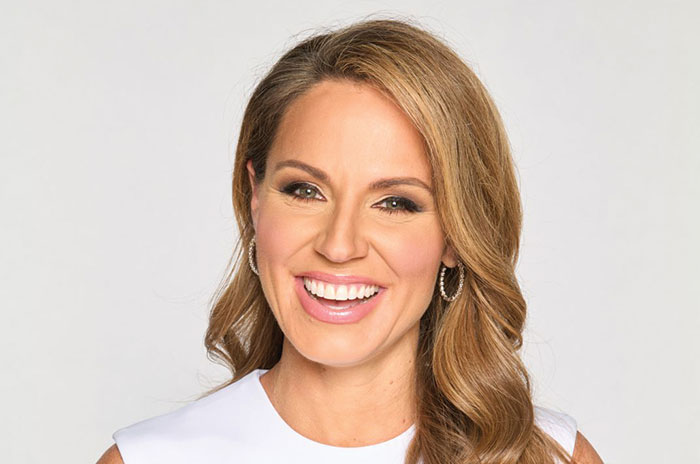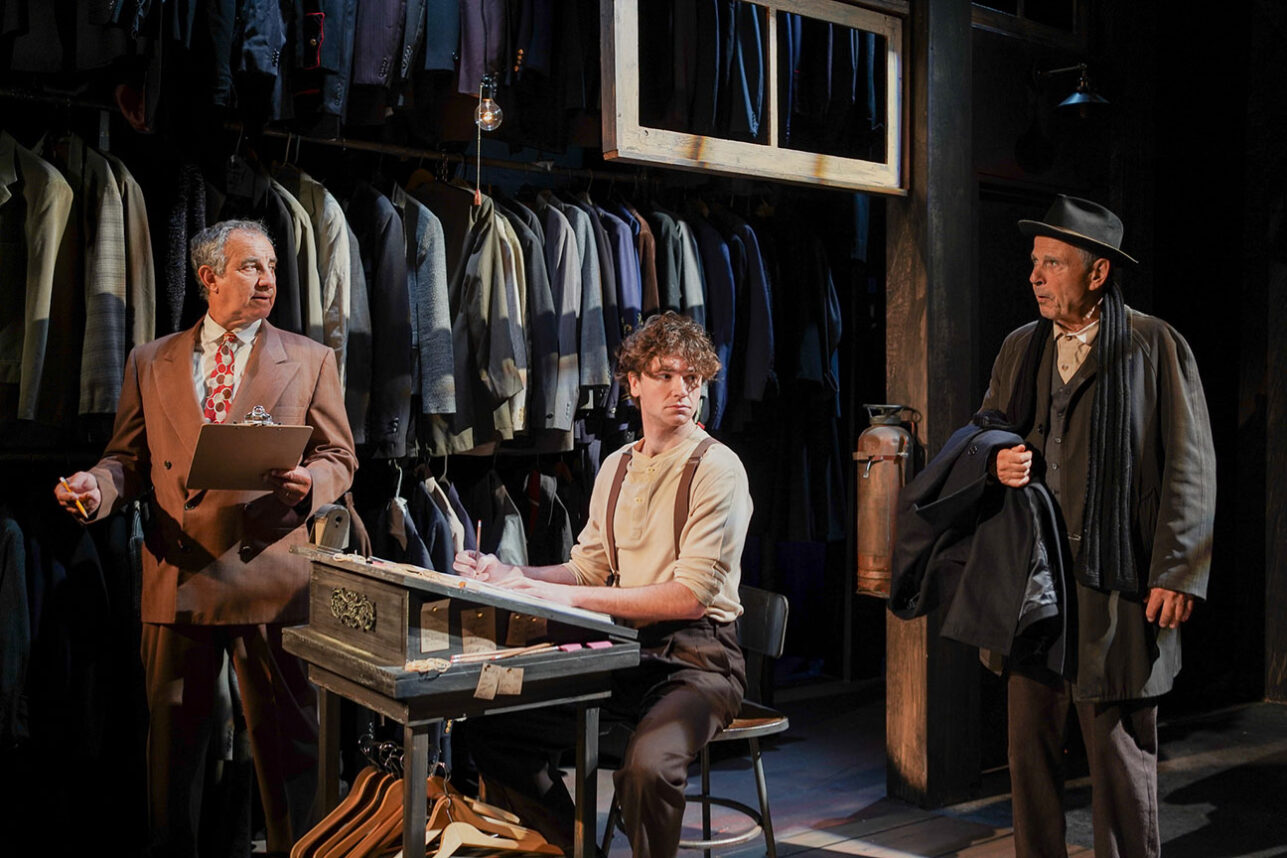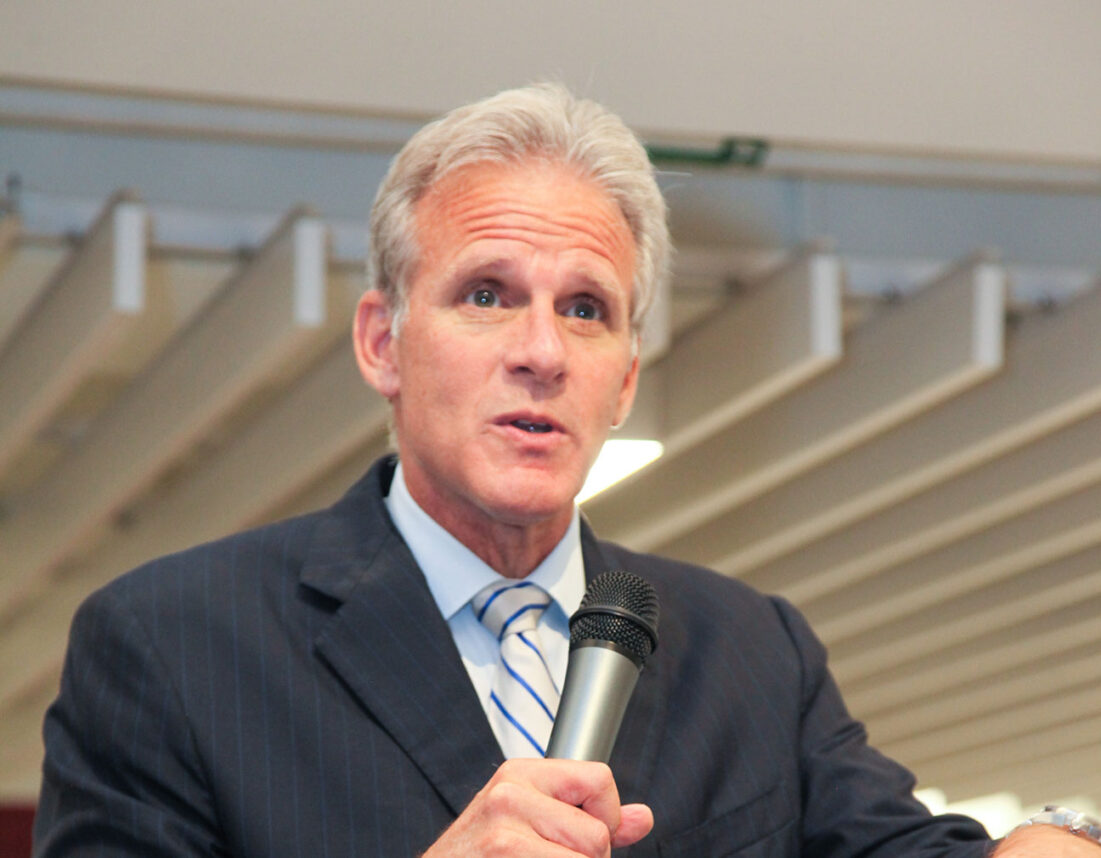Half of Tina Feiger’s family fled from there in 1938. Barbara Ravitz became so anxious on a visit there in 1969 that she hasn’t been back since. Sherri Lipman, like so many American Jews, has never been there.
On Nov. 25, they will be in Germany, part of a huge, largely Jewish choral ensemble singing music based on a Jewish text, written by of one of the world’s most renowned Jewish composers. They will be not just in Germany, but in Nuremberg, where the Nazi regime generated its restrictive anti-Semitic laws. Not just in Nuremberg, but in a concert hall built over the rubble of the arena where thousands of Germans gathered in the 1930s to affirm Adolf Hitler’s hate-filled rants.
Southern California’s premier Jewish choral group, the Los Angeles Zimriyah Chorale (LAZC), will be joined by several other local ensembles and choirs from Canada and Israel to perform Leonard Bernstein’s ” Symphony No. 3, Kaddish,” in Nuremberg on Nov. 25 and 26.
LAZC and members of the other local groups – the Choral Society of Southern California, the Beverly Hills Presbyterian Church Chancel Choir, the El Camino Real High School Camerata and the Young Musicians Foundation Debut Orchestra – will also perform the symphony at UCLA’s Royce Hall on Nov. 13.
The European trip, billed as Sounds of Healing, includes a performance at the Musica Judaica Festival in Prague on Nov. 19 in a program of pieces composed at the Terezin (Theresienstadt) concentration camp, along with works by American and Israeli composers.
For many of the Jews involved in the tour, the prospect of visiting Germany and performing in the Bavarian city where the Nazis had spewed so much anti-Jewish hate was daunting. In Nuremberg, Hitler wanted to create “a Nazi Orlando, a theme park where Germans could express their love for the Reich,” said Paul Buch, a Zimriyah member who is producing a documentary film about the trip. “We’re doing this concert on grounds that were consecrated by Hitler to be a Nazi Disneyland.”
In addition, on the Czech leg of the trip, participants will have the option of visiting Terezin, which is a 90-minute drive from Prague.
After the Nuremberg concerts, Tina Feiger plans to visit the southern German city of Karlsruhe, from which her mother’s family fled in 1938. “I suppose on some level there is some unfinished business for me, especially since my mother had just died this past year,” she said. “I want to be more able to visualize her life as a young child and adolescent, [but] I’m quite certain I will have many mixed emotions.”
“I had to think long and hard about whether I wanted to go to Nuremberg,” said Lipman. “I had never been in Germany due to a long-standing antipathy born of my awareness of the horrors of the Holocaust.”
Because of the potential for anxiety and even trauma among chorale members, LAZC held a session in September led by psychotherapist Esther Hess, herself a Zimriyah member and daughter of a Holocaust survivor. Hess outlined warning signals of possible trauma, such as disturbances in eating or sleeping, depression, nervousness, frequent crying and even numbness, and she said that signals of stress could appear before, during or after the trip.
Hess assured the singers that there was nothing wrong with an emotional response to what they experienced unless it knocked them out of commission. “If you start crying at Terezin, that’s normal,” she said. “If you can’t stop crying three months later, that’s a problem.”
Being able to talk about feelings is key, Hess added. To that end, the tour organizers will have a rabbi, a chaplain, a doctor and a psychologist on staff to talk with anyone who needs help during the trip and also plan to provide opportunities for participants to share feelings with one another.
During the session, Barbara Ravitz told the group that she was overwhelmed by the emotions she felt on a visit more than 30 years ago. “Every time I saw someone who could have been alive during the war, I became terribly anxious, and I had to leave the country,” she said. Ravitz thought about sitting out the November tour, but, she said, one of the chorale’s leaders convinced her of “the importance of Jews going to Germany in a public capacity.”
Hess agreed, saying that the chorale’s highly visible and audible visit to Nuremberg represents a blow against prejudice and hate. “Genocide happens when the world is asleep,” she said.
The impetus for the Nuremberg trip originated with Nick Strimple, music director for LAZC, the Choral Society and Beverly Hills Presbyterian Church. Strimple, who was raised Baptist in Amarillo, Texas, has been working with music of the Holocaust since the mid-1980s, an interest that grew out of his doctoral work in Czech music.
During a visit to Terezin, Strimple said, he “got really hooked” on the evocative, emotion-laden works that had been composed there. When word got out that he was interested in Holocaust music, “people started coming up to me with tunes they had heard in the camps,” he said. “I just became kind of a magnet.”
He had also, over the years, been batting around the idea of a large-scale choral concert in Nuremberg with the former director of the Nuremberg Symphony Orchestra. That project reached “now or never” status a couple of years ago, when the Nuremberg director decided to leave the orchestra and began planning his final season, 2000-01.
They decided the most auspicious time for a concert would be November, which brings together the 10th anniversary of Bernstein’s death, the 62nd anniversary of Kristallnacht and the culmination of Nuremberg’s celebration of its founding 950 years ago. Around the same time, the city will open a new museum about its role in the Nazi era.
Meistersinger Hall, where the “Kaddish” concerts will take place, was built on the site of Luitpold Arena, where Hitler staged his early rallies, a site captured in many newsreels and in Leni Riefenstahl’s documentary “Triumph of the Will.” Today, the city has a growing Jewish population, currently numbering about 900, that supports a synagogue and a Jewish community center.
The Los Angeles-based chorales, plus the Tel Aviv Chamber Choir, the Efroni Children’s Choir of Israel and Lachan Jewish Chamber Choir of Toronto, will form a choir of some 200 voices for Bernstein’s haunting work, which combines a number of musical styles, including folk, jazz and neoclassicism. The Nuremberg Symphony’s current conductor, Jac van Steen, will conduct an orchestra that includes members of the Los Angeles Jewish Symphony. Cantor Ira Bigeleisen of Adat Ari El in North Hollywood, one of the LAZC’s directors, will be a soloist in the Prague and Nuremberg concerts.
“Kaddish,” composed in 1963, was not written specifically to memorialize the 6 million Jews who perished in the Shoah, Strimple said, but he considered it an appropriate selection for the Nuremberg concerts not only as a way of remembering the Nazis’ victims but to mark Nurem-berg’s transition from a city best known as the launching pad for the Nazi regime to one that has reinvented itself as a place dedicated to the promotion of human rights.
“To say ‘Kaddish’ in that place,” Strimple said, “sort of reclaims the area.”
Sounds of Healing includes a number of educational components, the most important of which is a 90-minute documentary about the concert in Nuremberg. Delbert Mann, who has won the Academy Award, the Emmy and the Golden Globe for his work in feature films and television and who directed many of Bernstein’s popular television specials, will direct the film.
Mann, 80, is a member of Beverly Hills Presbyterian and has narrated the church’s Christmas program that Strimple directs each year; the Sounds of Healing film project “dragged me screaming and kicking out of retirement,” he said. He also dropped bombs on Munich during the war as a member of the 8th Air Force and remembers, as a college student, hearing radio broadcasts of Nazi rallies. “Hitler’s ranting and raving, distorted by the shortwave transmission, and the
storm troopers shouting ‘Sieg heil!’ is an indelible memory,” Mann said. (One of the choristers, Wilbur Richardson, also flewwith the 8th Air Force, logging 30 mis-sions over Europe in 1944 before being seriously wounded.)
The film will include footage of rehearsals and performances and interviews with concert participants before and during the trip, plus background on Nuremberg today and stock footage of the 1930s rallies. Designed for television viewing, the documentary will be packaged as a video for use by schools, civic groups and other organizations.
Sounds of Healing is also recruiting school groups to attend the dress rehearsal of the UCLA concert the morning of Nov. 13. Participating schools will receive curriculum materials prior to the concert.
The various concerts, the film and scholarships for musicians who can’t manage the cost of the trip, among other expenses, add up to an impressive sum, and Sounds of Healing, which has raised more than $500,000 in cash and in-kind donations since early this summer, still needs another $100,000 to $120,000 to meet its obligations. Operating under nonprofit status, Sounds of Healing has been able to attract some major sponsors, including the Jewish Community Founda-tion of The Jewish Federation of Greater Los Angeles, the Los Angeles Museum of the Holocaust and the Los Angeles-Tel Aviv Partnership, along with other foundation, Jewish communal, civic and corporate support.
Sounds of Healing project manager Judy Fenton, a founding member of LAZC, said about a third of the chorale members have been actively involved in fundraising. The project still needs about $25,000 to cover scholarships for choristers who can’t afford the trip and $20,000 for the orchestra for the Royce Hall concert, plus expenses of bringing the Israeli choirs to Germany.
As the UCLA performance and the departure date for Europe draw near, whatever apprehension individual chorale members feel at this point seems to be subordinated to the excitement of making the trip – and making history. “It became clear to me that the past is a reflection, but the present is where the action is, and I wanted to be a part of the action,” Lipman said. “I wanted to help build a bridge through my music that could open doors and minds to altering patterns of the past.”
Fenton agreed. “I don’t want my grandchildren growing up hating Germans because they’re Germans,” she said. “We need a model, and maybe that model is music.”
Sounds of Healing will present Bernstein’s Symphony No. 3 on Mon., Nov. 13, at 8 p.m. at Royce Hall, UCLA. Ticket prices are $100 (two for $180, premium seats), $36 (general), $25 (each in groups of 10 or more) or $15 (students). For tickets or more information, call (310) 825-2101 (UCLA) or (213) 480-3232 (Ticketmaster), or visit the UCLA Performing Arts Web site at www.performingarts.ucla.edu or Ticketmaster at www.ticketmaster.com
To receive more information about Sounds of Healing, call Judy Fenton at (310) 670-5080 or visit the project’s Web site,www.soundsofhealing.org





















 More news and opinions than at a Shabbat dinner, right in your inbox.
More news and opinions than at a Shabbat dinner, right in your inbox.